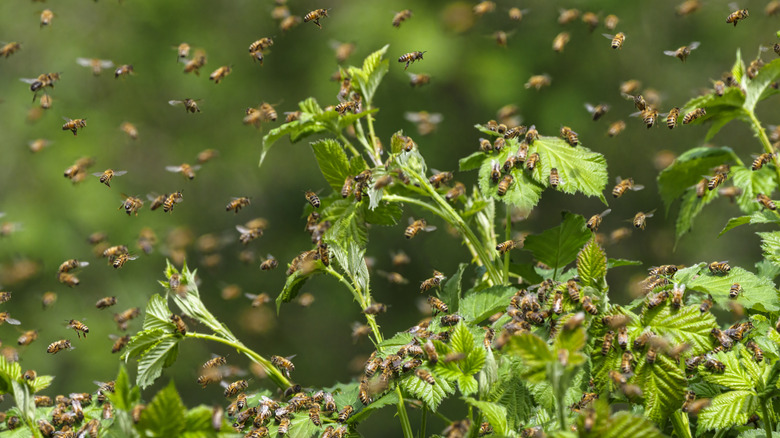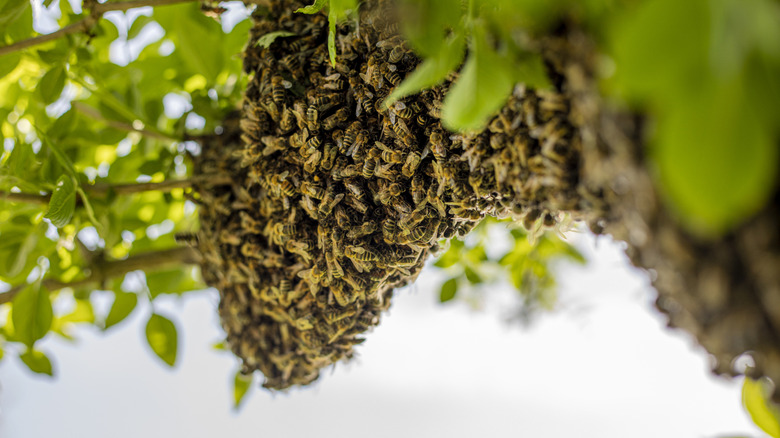The Dangerous Tip You Should Avoid At All Costs When Trying To Escape A Bee Attack
You may remember it from pulpy adventure novels or goofy kids cartoons: a character being chased by a swarm of bees only manages to escape by jumping into the water and waiting for the bees to give up and fly away before coming back to the surface, soaking wet but ultimately unharmed. But does this method actually work? The truth is, if you need to escape from some seriously angry bees, going underwater will not save you — at least not for very long.
You can understand where this theory came from. Since bees can't fly into the water, you avoid getting stung while submerged. But how long can you hold your breath? If you've made the bees think that you're a threat to their hive, they're not going to get distracted and fly away just because you took a quick dip under the water. In fact, they have been known to wait for hours, stinging their victim whenever they come up for air. If bees are chasing you, your best bet is to run until you can get indoors and wait it out safely.
The vast majority of native bees in the United States are solitary bees, but honey bees and some wasps live in communities. It might feel like their attacks come out of nowhere, but in reality, they typically only attack when they think you're threatening their hive. If you're kayaking too close to the trees on the shoreline or hiking a national park trail to see the landscape transform into a vibrant fall-hued haven, you may notice one or two bees bonking into you. This is a sign that you're approaching their home, and they're telling you to leave. Never swat at them when they do this. Just get out of there as soon as you can — and don't jump into the water.
What should you do if you are attacked by a swarm of bees?
Going underwater won't keep you safe from bees, but what should you do instead? Being stung by one bee is unpleasant enough, but being stung by an entire swarm, known as "mass envenomation," can be deadly. If you haven't been stung yet, take care not to swat at the bees or flail wildly in panic. Just get away from their hive in a quick, calm manner. Once you've been stung, though, the call has already gone out, and other bees in the area will believe that you're invading their hive and rush to the rescue. Killing them is a bad idea, too. Bees can smell when one of their own is killed, which will summon more bees.
If you notice that you have disturbed the bees, don't hesitate. Run — the longer you take to leave, the more bees will arrive. If you have the stamina, one strategy is simply to keep running until the bees decide you're far enough away for them to feel safe and give up. Some bees can fly up to 20 mph, which is faster than the average person comfortably runs, but about the same as an average sprint speed. You may be able to leave some of the bees behind — and it's definitely better than standing there and letting them sting you. Try to protect your face while you run if you can, but don't sacrifice your speed to do it. Ultimately, your goal should be to reach an enclosed space, like a building or a car. There, you can contact medical help (if you have difficulty breathing, feel dizzy, or have any other symptoms associated with an allergic reaction), remove stingers to limit the amount of venom in your system, and grab your travel first-aid kit for antihistamines, NSAIDs, and your EpiPen, if you need one.

